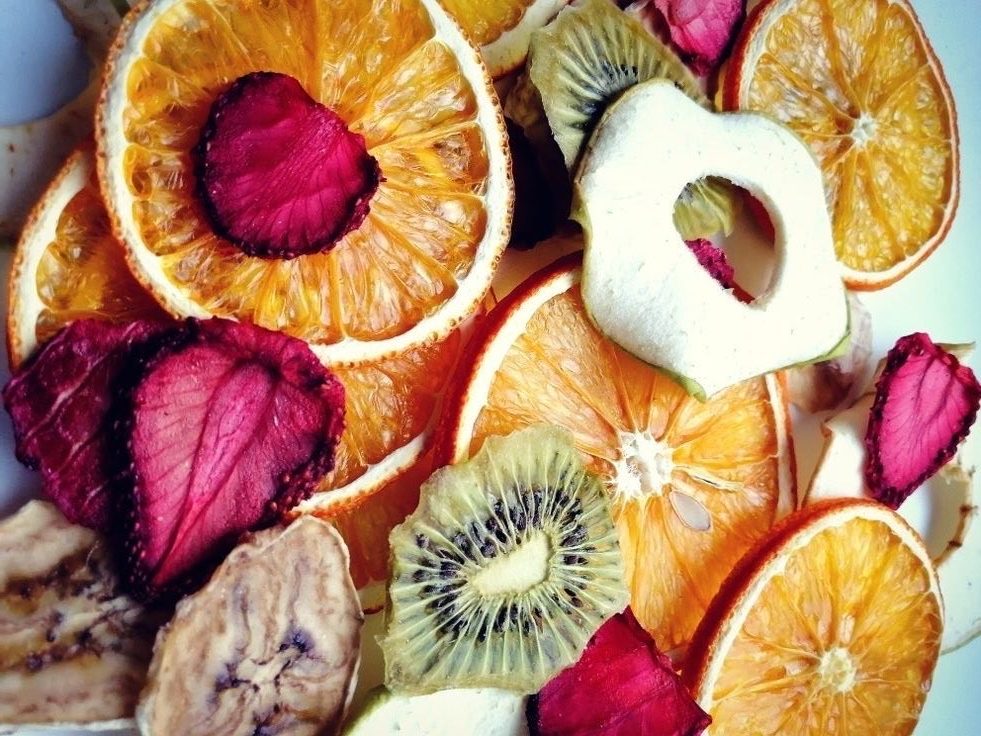
Benefits and Drawbacks of Dried Fruits
Benefits of Dried Fruits
-
Preservation of Nutritional Value through Advanced Techniques
One of the primary advantages of contemporary dried fruits is their ability to retain a significant portion of their nutritional value thanks to advanced drying methods. Techniques like freeze-drying and low-pressure drying not only safeguard but can also enhance specific vitamins and minerals, particularly vitamin C and antioxidants.
Examples:
- Dried Raspberries: Freeze-dried raspberries show an increased concentration of antioxidants, which play a crucial role in combating free radical damage.
-
Consistency in Taste and Aesthetic Quality
Innovative drying methods, such as nano-drying, allow fruits to preserve their original taste and visual appeal exceptionally well. These techniques ensure that the fruit's texture, flavor, and color remain intact, providing a notable advantage over traditional drying methods.
Examples:
- Dried Strawberries: Freeze-dried strawberries maintain their shape and flavor much more effectively than those processed using conventional techniques.
-
Convenience in Transportation and Storage
Dried fruits are an excellent option for transportation and long-term storage due to their reduced size and weight. They can be easily packed into compact containers and do not require refrigeration. Additionally, their prolonged shelf life makes them particularly attractive for global markets.
Examples:
- Dried Dates: Dried dates can be shipped worldwide with ease and retain their quality over long durations.
Goharshid Sanat Naghshe Jahan Company

Drawbacks of Dried Fruits
-
Nutrient Loss During Drying
Modern drying methods, including freeze-drying and nano-drying, are proficient at retaining many nutrients; however, they often lead to a reduction in heat-sensitive vitamins, particularly vitamin C and the B vitamins. This is particularly concerning for fruits, as these vitamins are essential for overall health.
Examples:
- Dried Oranges: The vitamin C levels in dried oranges are considerably lower than those found in fresh oranges due to the heat sensitivity of this vitamin.
-
Increased Caloric Concentration Due to Volume Loss
The drying process reduces the size of fruits while maintaining their caloric content. As a result, dried fruits can have a higher calorie density compared to their fresh versions, which may be problematic for individuals monitoring their weight.
Examples:
- Dried Apples: Dried apples typically possess a greater caloric content than fresh apples, which is an important factor for those on calorie-restricted diets.
-
Added Sugars in Some Dried Fruits
Many manufacturers of dried fruits add sugar to improve flavor and sweetness. This can lead to higher sugar levels, which may be concerning for individuals who need to manage their sugar intake.
Examples:
- Dried Plums with Added Sugar: Dried plums that have sugar added can lead to weight gain or increased blood sugar levels.
-
Use of Chemicals in Certain Dried Fruits
Some dried fruits are treated with chemicals, such as sulfites, to maintain their color and flavor. These additives can cause allergic reactions or digestive issues in sensitive individuals.
Examples:
- Dried Raisins: Certain raisins are treated with sulfites to preserve their vibrant color, which may pose a risk for those with sensitivities to these substances.
Goharshid Sanat Naghshe Jahan Company


